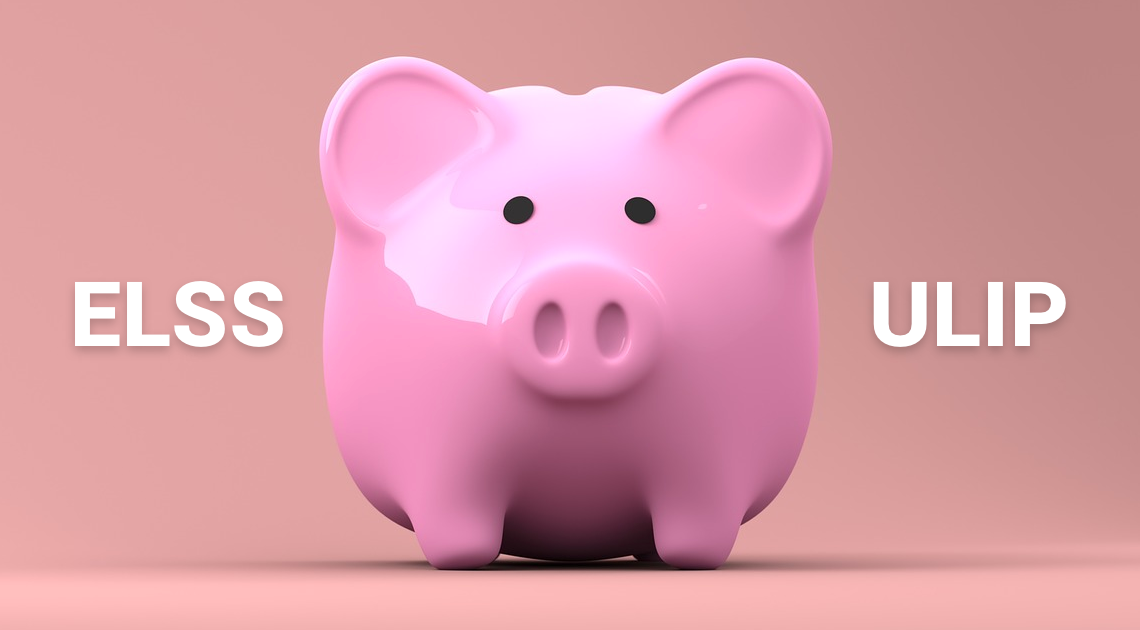
Introduction
No one likes paying taxes, but finding the right tax-saving instrument is a daunting task. If you are not a Chartered Accountant or tax lawyer, weighing the pros and cons of all your options is a time-consuming exercise. While various saving schemes of the central government come are highly secure investments, they do not provide high returns. Even if you have a low-risk appetite, you should consider ULIP and ELSS. They are good investment options for tax-saving as well as earning higher returns on investments.
ULIP vs ELSS
A Unit Linked Insurance Plan (ULIP) is simply a combined investment and life insurance plan. These plans are provided by insurance companies and are regulated by the Insurance Regulatory and Development Authority of India. In these plans, part of your premium goes towards a life insurance cover and the rest is invested in the secondary markets. Most ULIP schemes allow the investor to choose a combination of available funds. These funds could be equity, debt, or hybrid funds. In a ULIP the value of your life cover is not fixed, it depends on the market performance of your funds.
An Equity Linked Saving Schemes (ELSS) are professionally managed funds, not unlike GAAP reporting. An ELSS is a pure investment product wherein your money is invested in the secondary markets and the returns are based on the performance of the market. Unlike ULIP, ELSS is regulated by the Securities and Exchange Board of India. In ELSS there is no option of choosing a debt or hybrid fund, your money is invested in equity funds only.
Tax-savings in ULIP vs ELSS
Premiums paid for ULIP are exempted from taxes up to Rs. 1.5 lakh under Section 80C of the Income Tax Act. Also, the maturity benefits are tax-free under Section 10D. The gains made via a ULIP are taxable as per your income bracket. A ULIP has a lock-in period of five years. The amount invested in an ELSS is tax-deductible up to Rs. 1.5 lakh each year. However, the returns made are not taxable up to Rs. 1 lakh. Above that amount, there is long-term capital gains tax at 10 percent regardless of your income bracket. ELSS has a lock-in period of three years.
The bottom line
Whether you choose ULIP or ELSS depends on your long-term financial plan. ELSS are open-ended after three years, you can divest any time after that; unlike ULIP which has a pre-determined fixed-term. You would also have to consider your income slab and available tax-saving options. Section 80C comes with an absolute restriction of Rs. 1.5 lakh on most tax-saving instruments. Once you have decided between ULIP vs ELSS, you would have to find the right plan that matches your needs. Selecting among dozens of available plans could be intimidating, particularly if you have recently started to plan for long-term financial security. You can easily stop worrying as options like Finserv MARKETS are available. You can just go to the website and cherry-pick your desired ULIP vs ELSS plan.
Finserv MARKETS, a subsidiary of Bajaj Finserv, is a one-stop digital marketplace that has been created for consumers on the go. It offers 500+ financial and lifestyle products, all at one place. At Finserv MARKETS, we understand that every individual is different. And that’s why we have invested in creating a proposition – Offers You Value. A value proposition that ensures you get offers which are tailor made for you. We also offer an amazing product range and unique set of online offers across Loans, Insurance, Investment, Payments and an exclusive EMI store. Be it in helping you achieve your financial life goals or offering you the latest gadgets, we strive to offer what you are looking for. From simple and fast loan application processes to seamless and hassle-free claim-settlements, from no cost EMIs to 4 hours product delivery, we work towards fulfilling all your personal and financial needs. What’s more! Now enjoy the same benefits in just one click with our Finserv MARKETS App.
